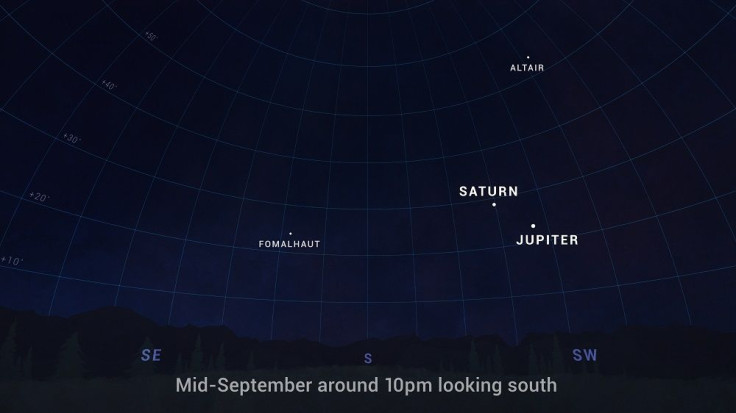Sky Watching: Star With A Vanishing 'Planet' Visible This September
KEY POINTS
- Fomalhaut was once thought to harbor what was believed to be the first exoplanet directly imaged by Hubble
- A recent study concluded that the 'planet' was likely just debris from a collision between two objects
- This September, Fomalhaut is visible as one of the brighest stars in the sky
September has some exciting sky events to offer but one of them may be particularly more mysterious than the rest. This month, the star with the disappearing planet will be visible to many sky watchers.
This September, even sky watchers in cities will have a chance to spot quite a unique star towards the south. Called Fomalhaut, the star is located relatively nearby just 25 light years away and, it is still pretty young at just a few hundred million years old. By comparison, the Sun is about 4.5 billion years old, which means that it is about halfway through its life.
Even more interesting about Fomalhaut is the fact that in 2008, it appeared to be the first star to be detected to have a planet using direct imaging with Hubble. This planet, then named Fomalhaut b, was reportedly a rare one that's completely covered in dust.
But in the years that followed, some studies argued that the object that was observed was actually a short-lived dust cloud instead of a planet because when NASA’s Spitzer Space Telescope observed it, it did not appear to have detectable infrared heat signatures. On the other hand, there were also other studies that confirmed the existence of Fomalhaut b based on the initial observations that the Hubble Space Telescope made from 2004 to 2006.
However, it eventually became apparent that the signals from Fomalhaut b were growing fainter and fainter until 2014 when it seemed to disappear completely.
Earlier this year, a study offered a possible explanation for the existence of Fomalhaut b that's neither of a dust cloud nor a planet. According to the astronomers who wrote the April 2020 study, it's possible the Fomalhaut b is actually the remnant of a collision of two small bodies made of ice and dust, much like the objects in the Kuiper Belt.
In other words, Hubble just happened to be looking at the system at the right time when the collision had just taken place, leading to the mistaken identity of the event.
This September, sky watchers will get to see this mysterious star and they won't need Hubble or Spitzer to catch a glimpse of Fomalhaut as it will appear low in the southern sky just a few hours after sunset, towards the left side of Saturn and Jupiter.

According to NASA's Sky Watching Tips, some sky watchers tend to be surprised when they see Fomalhaut because it sometimes appears as though it is flickering because of its low location. Now, instead of wondering what that flickering thing in the sky might be, sky watchers may watch in wonder as they spot the star that "lost" a planet that wasn't a planet after all.
© Copyright IBTimes 2024. All rights reserved.






















